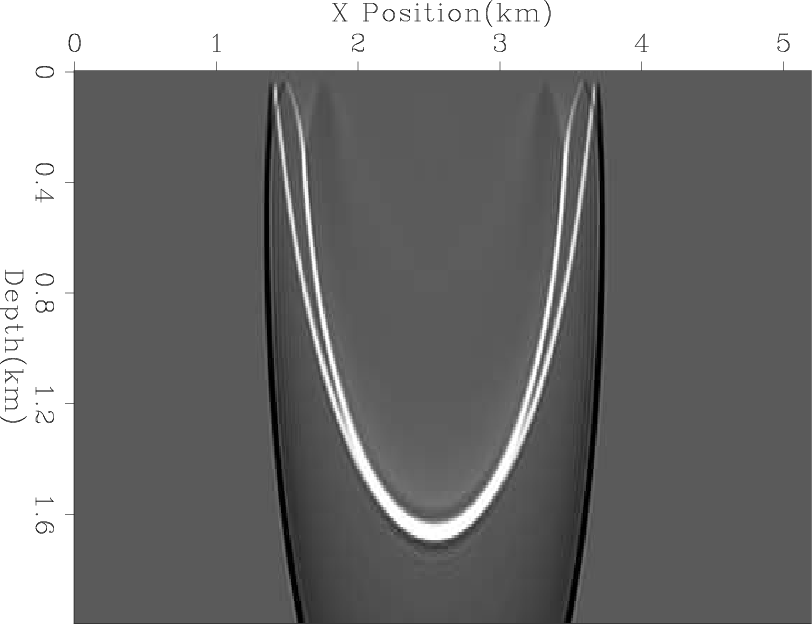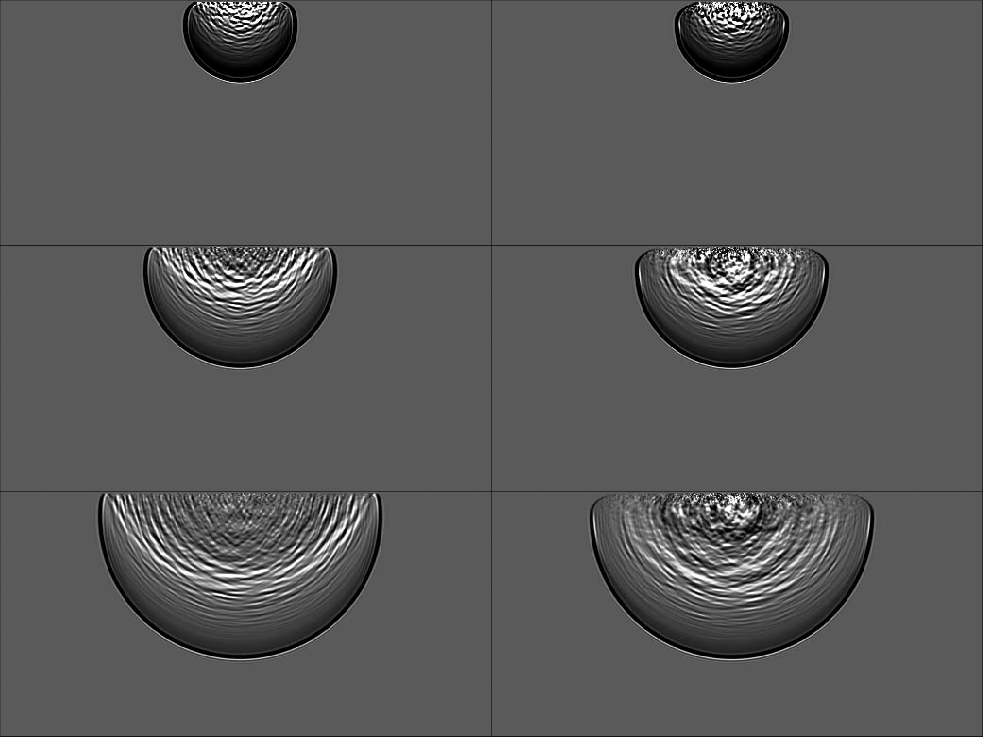|
|
|
|
More fun with random boundaries |
 , the vertical velocity
, the vertical velocity | (1) |
| (2) |
| (3) |
| (4) |
| (5) |
|
turn
Figure 7. The result of overlaying the wave-fields using an isotropic and anisotropic boundary. The anisotropic boundary results in energy traveling longer in the boundary region. |

|
|---|---|
|
|

|
|---|
|
vti
Figure 8. The left panels show a wave-field at several different time steps using an isotropic boundary condition. The right panel shows the wave-field using an anisotropic boundary condition. |
|
|
|
|
|
|
More fun with random boundaries |